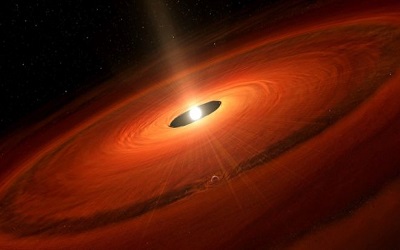随着PTE考生对PTE口语和PTE听力的重视,大家口语和听力的分数得到极大提高,但是PTE阅读渐渐成为考生们新的难题。墨尔本悉尼文波PTE特别为PTE考生们挑选了适合练习PTE阅读的文章,主题,内容,长度都与PTE阅读题中的文章相似。激活学过的词汇,更新新的词汇,提高阅读速度,全面提升自己的阅读能力。
Astronomers have discovered signs of a baby planet developing around another star. The team used an array of radio telescopes in Chile to close in on a nascent planetary system lying 176 light-years from Earth – distant to us, but nearby in astronomical terms. The forming planet is thought to be an ice giant, similar to Uranus or Neptune in our Solar System. In the two decades since the first exoplanets were found, astronomers have discovered that planetary systems do not necessarily follow the familiar template set by the eight planets which the Sun. There is great diversity in the configuration of planetary systems and in the characteristics of exoplanets themselves. There is much debate over how this diversity emerges, including over the formation of Neptune-like icy giants. Takashi Tsukagoshi at Ibaraki University, Japan, and colleagues used the Atacama Large Millimeter/submillimeter Array (Alma) in northern Chile to take a close look at the planet formation site. TW Hydrae is estimated to be about 10 million years old and is one of the closest young stars to Earth. Thanks to its proximity and the fact that its axis of rotation points in Earth’s direction, astronomers are able to get a face-on view of the developing planetary system. The young star is surrounded by a disc made of tiny dust particles. Variations in the signal received by Alma allow researchers to estimate the size of these dust grains. Smaller, micrometre-sized dust particles dominate the most prominent gap in the disc, which has a radius of 22 astronomical units (AU – equivalent to the mean distance from the centre of the Earth to the centre of the Sun). Gravitational interactions and friction between gas and dust has probably pushed the larger dust out of the gap, say the researchers. The team calculated the mass of the unseen planet based on the width and depth of the 22 AU gap and found that the planet is probably slightly more massive than Neptune. “Combined with the orbit size and the brightness of TW Hydrae, the planet would be an icy giant planet like Neptune,” said Dr Tsukagoshi. Alma consists of 66 high precision antennas located on the Llano de Chajnantor, a plateau in the Atacama Desert with an altitude of 5,000m. The antennas capture and concentrate radio waves from astronomical sources, allowing astronomers to see through the dust that obscures parts of the sky from visible light telescopes.
nascent: adj. 初期的
configuration: n. 构造, 形状
axis: n. 轴
prominent: adj. 突起的
radius: n. 半径
antennas: n. 天线;触角
plateau: n. 高原
obscure: v. 遮掩;使变暗





